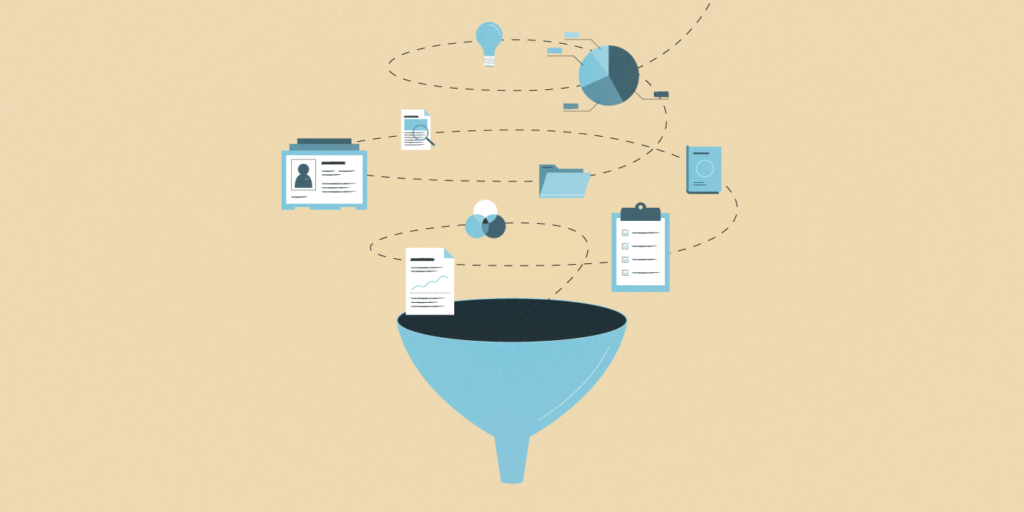Enterprise Data Warehouse – Definition
An enterprise data warehouse is a centralized digital repository. It gathers, polishes, and stores vast amounts of data from every department of an enterprise.
With a data warehouse, all the data is right there, always ready for analysis. So, instead of rummaging through multiple, disjointed databases or systems to find the data you want, you have it all in one accessible place.
Stats
From 2022 to 2023, the worldwide data warehouse market shot up from $27.93 billion to $31.85 billion. Furthermore, it’s on track to soar at a 14.0% CAGR, reaching a whopping $53.8 billion by 2027.
Core Concepts of Enterprise Data Warehouse
Data warehouse implementation offers numerous benefits for enterprises considering their size and the volume of data they process daily. Let’s take a look at what a robust and reliable DWH can do for your enterprise:
Data Integration
In a business landscape, you’ll often find data in multiple formats across various systems. Data integration brings together not only all the data, but also numerous applications and systems your enterprise is using. A data warehouse ensures that there’s a standard format and that data from one system complements another.
Benefits
It offers you a comprehensive view of your business data. Using a single, consistent data source allows your analysts to get reliable insights.
Central Repository
The central repository is essentially the heart of the DWH, where all the integrated data resides. Businesses have a constant information flow from different departments, and a central repository acts as a main source of truth, where all your data comes together.
Benefits
- Quicker data retrieval;
- Reducing redundancy;
- Streamlining data management.
Subject-Oriented Search
Instead of data being organized based on its source or input method, in a data warehouse it’s categorized based on business subjects or themes, such as customers, products, or sales. It simplifies search and analysis tasks for everyone involved in data processing and analysis.
Benefits
It speeds things up considerably when pulling data about certain business aspects. It also reduces costs of data processing.
Data Storage
A data warehouse can store data, both current and historical, over long periods. This lets enterprises trace issues, spot trends, and predict changes.
Benefits
- Boosts your ability to spot trends;
- Gives you insights for mapping out strategies;
- Lays out a picture of the business growth over the years.
The Architecture of an Enterprise Data Warehouse
Let’s take a look at how an enterprise data warehouse is built as it’s the main reason for all the benefits described above.
Data Sources
Data sources are the original repositories from where data is drawn. Data sources vary from company to company and can include:
- Operational systems;
- CRM systems;
- Financial software;
- External data feeds, etc.
They serve as the primary input points, supplying raw data that will eventually be integrated and analyzed within the data warehouse.

Staging Area
The staging area is a temporary storage space where data from various sources is collected. Here, the data is checked, cleaned, and transformed. It ensures that inconsistencies or inaccuracies are addressed before data is moved further down the pipeline.
Data Integration Layer
This layer involves the ETL (Extract, Transform, Load) or ELT (Extract, Load, Transform) processes. The extracted data is transformed into a format suitable for querying and analysis and then loaded into the data warehouse.
Presentation Layer
Presentation layer structures and stores the data in the right format. It ensures that the data is easily accessible, subject-oriented and is ready for both in-depth analysis and quick reporting.
Data Marts
Data marts are subsets of the main data split into groups based on a specific business process, like marketing, sales, or finance. They allows departments to gather information efficiently without navigating the entire data warehouse.
Access Tools
These tools enabling all users to engage with, analyze, and interpret data. They ensure you can turn the data into meaningful insights.
Access tools encompass:
- Business intelligence tools;
- Reporting software;
- Interactive dashboards.
This layer ensures that business people can work with an enterprise data warehouse directly. Interactive dashboards can be integrated in the solution so that managers and other decision makers could see the trends in a comprehensible form, without involving data specialists.
Advantages of Enterprise Data Warehouse
In this article, we’ve created an overview about a concept of a data warehouse for enterprises. To sum it up, enterpise data warehouse brings the following advantages to the table:
- Consistent and Reliable Data: Since a data warehouse centralizes data and employs a smooth data integration processes, data inconsistency and discrepancy are minimized. You can trust that the data you’re accessing is accurate and standardized across the board.
- Faster Decision Making: With all your data in one place, decision-makers can quickly obtain insights without waiting for data extraction from multiple sources. Time saved is money saved!
- Improved Business Intelligence: With data being consolidated from multiple sources into the enterprise data warehouse, a richer, more comprehensive dataset is available. It offers you a complete picture of how your business ticks.
- Scalability: Data warehouses are designed to scale with the growth of the enterprise, ensuring your enterprise and your system can expand at the same rate your data does.
- Trend Prediction: Enterprise data warehouses store historical data providing a valuable opportunity to benefit from its insights. Diving into this data allows businesses to see patterns and trends which results in improved decision making and better business outcomes.
Bottom Line
Navigating the complexities of the data-driven world might seem daunting, but the enterprise data warehouse allows to deal with the challenges. It helps businesses take a step towards streamlined data management.

